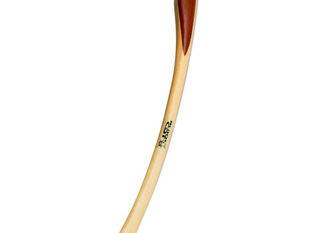
Of the neighbours who were occasionally met at the bait-site, or on the connecting path (the Eastern Staircase), we have so far mentioned the rodent tribe (Black rats and field mice), snakes (viper and grass-snake), the old wildcat and a marten. But there were many others. Some of them visited only very rarely while others were more persistent. A hedgehog (Erinaceus europaeus) belonged to the latter category.

The hedgehog was mostly a latecomer. He would visit after midnight – towards three-four in the morning. Sometimes he chose to come early, i.e., between nine and eleven in the evening which was in the prime-time slot at the bowl. It was at such times that he was bound to come across members of Boldy’s family.
Or maybe that was another and more adventurous hedgehog? There was no way for us to be certain either way. Hedgehogs look so much alike. Who Is Who is a difficult game when it comes to hedgehogs.
With members of the jackal family, it was easier – there were individual features of behaviour to go by. Individualities were predictably also portrayed in how an animal behaved towards others – in this case, towards a visiting hedgehog. Accordingly, the timid ones – like the sisters in the Big Ears and Round Ears sibling pairs – took the ‘better-not’ approach. When they saw the hedgehog rummaging and sniffing among the leftover crumbs, they would only take a look at him from the wings and go somewhere else:
Other less nervous family members took a closer look at the prickly creature. Like Brother Big Ears:

As the principal figure on the bait-site, White Back found it below his dignity to pay much attention to the prickly visitor. As always, such a nonchalant attitude leads to mistakes. The Uncle stepped on the hedgehog from time to time, often limping for days afterwards.
At the end of the day (or rather, of the night), the hedgehog was being accepted for what he was: a harmless neighbour. He went for the leftovers from the jackals’ dinner and who would be against that? From time to time, he took more, but again in the way of carelessly left food in which, after an ample dinner, no one was much interested. Like little fishes dropped by the wings. Since they have been lying around and it was nearly sunrise, why not?
In the clip above, the hedgehog seems to be interested in a little fish lying on the upper right of the stage. The time is close to four in the morning in the night of 10-11 June, 2024. The night was remarkable for the fact that of the two Big Ears – brother and sister – the brother kept carrying bits of food for his sister, waiting in the wings. She has always been the more timid (or the more prudent?) of the two, as noted before. The brother kept leaving morsels for her for a long time:
Eventually, the sister disappeared, possibly having gone down to the river. The hedgehog searched the outer perimeter of the stage, finding bits dropped here and there. The scenes of the night illustrate well that when there is a stable resource, replenished night after night, food is altruistically shared between the main users. In good times, enough may remain to be used also by neighbours.
The hedgehog continued to appear all through the summer of ’24 as it had been the case during the year before that. Maybe the hedgehog was one and the same, or there were different ones, but it was always only one to be seen onstage.
The Old Wildcat (Felis silvestris)
Now, this was a dangerous customer. When she was around, no one of the family dared to be even remotely nearby.
The cat had a distinctive black stripe running all along the spine, and a long heavy tail. Its end was rounded and not tapering like in the domestic cat (F. catus). Some hybridization with a domestic cat may have occurred several generations ago, as in the camp wildcat the front legs and chest were white.

Indeed, stray cats could be seen around the bait-site from time to time. Some of them might have become feral which would have assisted hybridization. The fact of the matter was that sterilizing cats or dogs was not practiced in the nearby village of Stanevo, nor, to the best of our knowledge, anywhere in the wide vicinity. The dog population was certainly kept down by in-species cannibalism. Both dogs and jackals would be helping in reducing young cats’ numbers. In all this, hybridization between domestic and wild species can be seen to be a parallel process. Round ears in the bait-site visiting family, as well as longish black tails among the young may be a sign of this.
In the final account, it is to be said that visits by stray or feral dogs and cats have been consistently a rare occurrence at the bait-site. For either species, only two-three visits per season have been registered. The same goes for foxes. On the other hand, there has been a persistent presence of a badger (Meles meles) at the bait-site. About this interesting visitor we’ll tell you in the next story.






